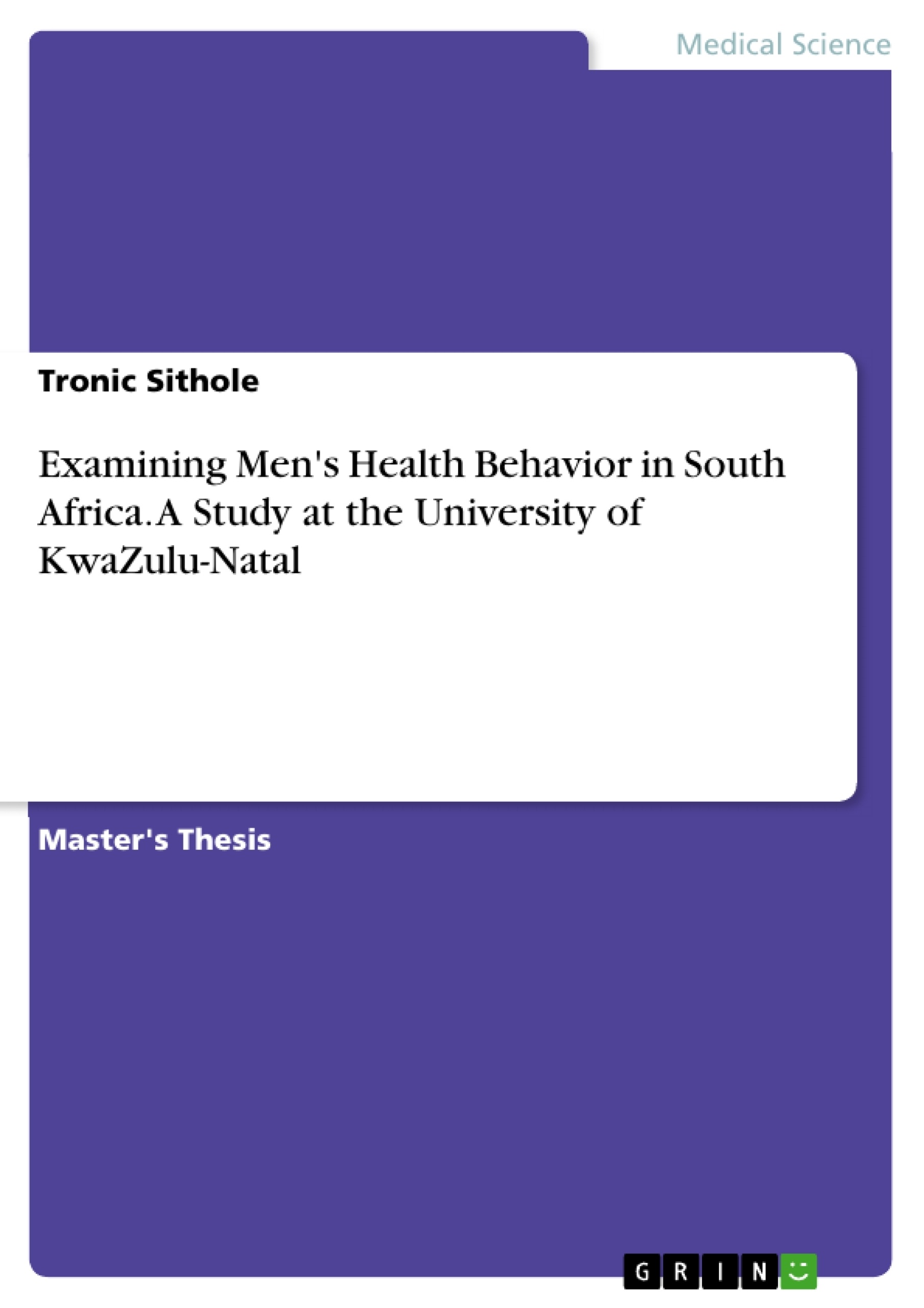The present study explores the health-seeking behavior and use of health care services among male students at the University of KwaZulu-Natal, Howard College campus in South Africa.
To gain an understanding of why men underutilize health care services, many researchers have looked at the factors that influence men's health-seeking behaviours. South African men have been neglected in the health-seeking process. The overall objective of this research is to provide insights into factors affecting their utilisation of health care services and men’s healthcareseeking behaviour. The study used a qualitative research technique to better understand the health-seeking behaviour of male students at the University of KwaZulu-Natal, Howard College campus, drawing on 30 in-depth interviews conducted with male students aged 18 and above.
There were a variety of health care facilities available to the men. However, men preferred private health care services but were unable to access these services due to their unemployed status. Further, most men reported not seeking medical attention as soon as they felt ill. These results highlight the need for men to have access to health care. To improve men's use of health care services and behavioural healthcare-seeking behaviour, additional healthcare interventions are needed.
Inhaltsverzeichnis (Table of Contents)
- CHAPTER ONE: INTRODUCTION
- 1.1 Background of the study
- 1.2 Motivation for the study
- 1.3 Aims of the study
- 1.4 Research questions
- 1.5 Theoretical framework
- 1.6 Organisation of the dissertation
- CHAPTER TWO: LITERATURE REVIEW
- 2.1 Introduction
- 2.2 Men's health-seeking behaviour
- 2.2.1 The Influence of masculinities
- 2.2.2 Men's experience with a medical professional
- 2.3 Factors facilitating the use of health services
- 2.3.1 Students general health requirements
- 2.3.2 Masculinity and the gendered nature of public health care
- 2.3.3 Health seeking process
- 2.3.4 Condom use among adolescents and young adults
Zielsetzung und Themenschwerpunkte (Objectives and Key Themes)
This research aims to understand the factors influencing male students' utilization of healthcare services at the University of KwaZulu-Natal, Howard College campus. The study utilizes qualitative research to explore the health-seeking behaviors of these students.
- Health-seeking behavior of male students
- Factors influencing healthcare utilization
- The role of masculinity in healthcare access
- Availability and accessibility of healthcare services
- Influence of socioeconomic factors on healthcare choices
Zusammenfassung der Kapitel (Chapter Summaries)
Chapter one introduces the study's background, motivation, aims, research questions, theoretical framework, and organizational structure. Chapter two provides a comprehensive literature review on men's health-seeking behavior, exploring the influence of masculinities, men's experiences with medical professionals, and factors facilitating the use of health services. This chapter further examines students' general health requirements, the gendered nature of public healthcare, the health-seeking process, and condom use among adolescents and young adults.
Schlüsselwörter (Keywords)
This research focuses on health-seeking behavior, male students, utilization of healthcare services, University of KwaZulu-Natal, Howard College campus, masculinity, socioeconomic factors, and access to healthcare.
- Arbeit zitieren
- Tronic Sithole (Autor:in), 2022, Examining Men's Health Behavior in South Africa. A Study at the University of KwaZulu-Natal, München, GRIN Verlag, https://www.grin.com/document/1370333



